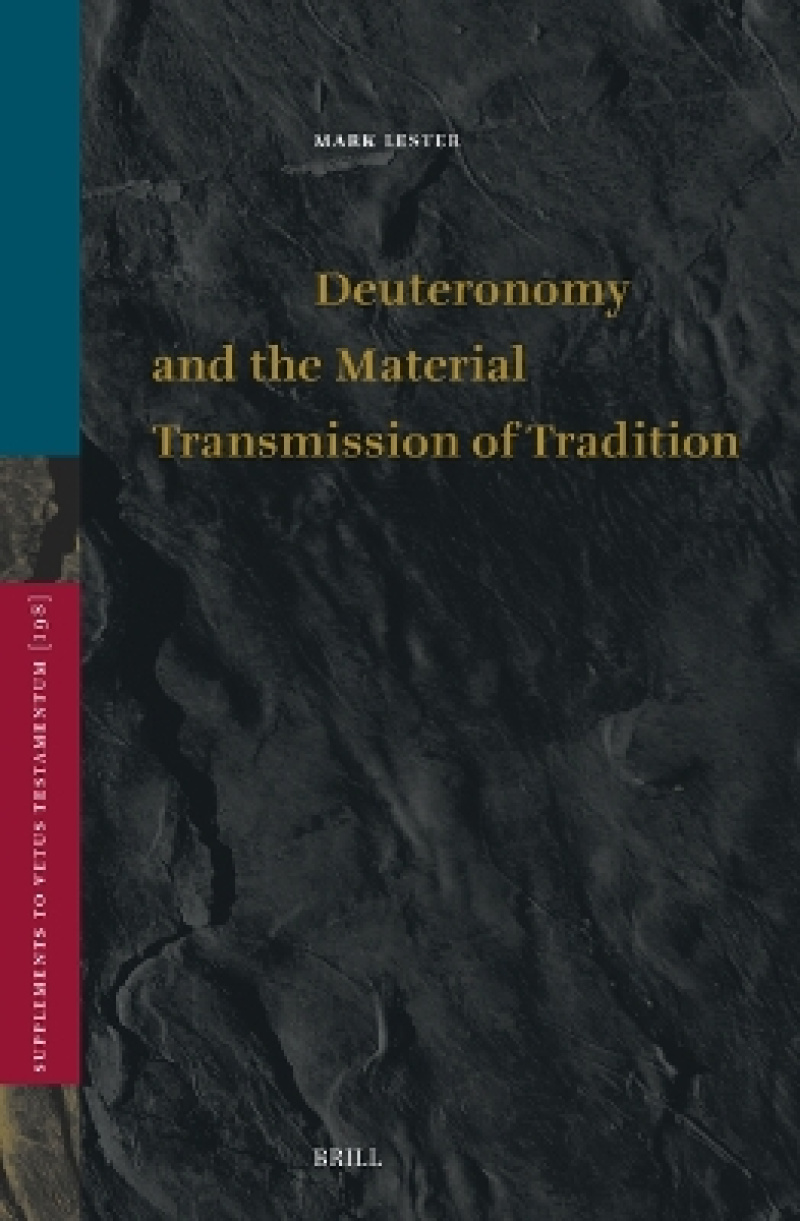Winner of the 2025 Manfred Lautenschlaeger Award for Theological Promise
Deuteronomy and the inscribed texts depicted within it are often called “books.” Moreover, its treatment of writing has earned it a prominent place in historical accounts of the religion of ancient Israel and Judah. Neither Deuteronomy nor its text-artifacts, however, are books in any conventional sense of the term. This interdisciplinary study reorients the analysis of Deuteronomic textuality around the materiality, visuality, and rhetoric of ancient rather than modern media. It argues that the Deuteronomic composition adapts the media aesthetics of ancient treaty tablets and monumental inscriptions to a story that is itself transformed into an artifact of the past.
Deuteronomy and the inscribed texts depicted within it are often called “books.” Moreover, its treatment of writing has earned it a prominent place in historical accounts of the religion of ancient Israel and Judah. Neither Deuteronomy nor its text-artifacts, however, are books in any conventional sense of the term. This interdisciplinary study reorients the analysis of Deuteronomic textuality around the materiality, visuality, and rhetoric of ancient rather than modern media. It argues that the Deuteronomic composition adapts the media aesthetics of ancient treaty tablets and monumental inscriptions to a story that is itself transformed into an artifact of the past.
Les mer
This study explores the materiality of writing in the Deuteronomic composition, which—the book argues—adapts the media aesthetics of ancient treaty tablets and monumental inscriptions to a Hebrew narrative that is itself transformed into an artifact of the past.
Les mer
Acknowledgements
List of Figures
List of Tables
Abbreviations
Introduction: Deuteronomy and the Book
1 Trajectories in Book History
2 Media Aesthetics and the Reading Experience
3 Deuteronomic Style and Textuality in Critical Biblical Scholarship
4 Deuteronomic Textuality in Early Modern Europe
5 Textuality, Materiality, and the Deuteronomic Composition
1 From Discourse to Artifact
1 Entextualization
2 Internal Self-Reference and Labeling in the Deuteronomic Composition
3 The Deuteronomic Composition as tôrâ
4 The “Words of tôrâ” as Inscribed Text
5 Enacting Repetition of the tôrâ
6 Deuteronomy 28:58 within and beyond the Deuteronomic Composition
2 Esarhaddon’s Succession Treaty as Text and Object
1 Writing a ṭuppi adê of Succession
2 Conceptual Whole
3 Component Parts
4 Circulating the Will of Esarhaddon
5 Text-Artifact
6 Media Aesthetics of the EST Tablets
7 Conclusion
3 Monuments and Interaction: The Case of Kulamuwa’s Portal Orthostat
1 Monuments as Interactive Media
2 Kulamuwa’s Orthostat at Iron Age Zincirli
3 Pragmatic Features of Kulamuwa’s Orthostat Composition
4 Media Aesthetics of Kulamuwa’s Orthostat
5 Kulamuwa’s Performance of Kingship
6 Portal Orthostat as Interactive Object
7 Pragmatic Paradigms of Zincirli’s Iron Age Inscriptions
8 Conclusion
4 The Material Imaginary of the Deuteronomic Composition
1 The Tablets of the Covenant (Deut 4:13; 5:22; 9:9–10:5)
2 Adornments of Heart and Home (Deut 6:6–9; 11:18–21)
3 An Anti-Royal Inscription (Deut 17:14–20)
4 A Public Monument (Deut 27:1–8)
5 The Scroll (Deut 31:9–13, 24–26)
6 The Transcribed Song (Deut 31:16–22, 30; 32:1–44)
7 Conclusion
5 Textual Landscapes and the Poetics of Proximity
1 Centralization and the Materiality of Ritual (Deut 12:2–7)
2 Text-Artifacts in the Cultic Landscape (Deut 6:9; 11:20; 31:9–13, 24–26)
3 Text-Artifacts in the Judicial Landscape (Deut 17:2–13)
4 The Aura of Authenticity and the Making of Literature
5 Conclusion
Epilogue: The Deuteronomic Composition and the Movement of Culture
Bibliography
Index of Passages
Index of Modern Authors
Topic Index
Les mer
Produktdetaljer
ISBN
9789004691803
Publisert
2024
Utgiver
Brill
Vekt
673 gr
Høyde
235 mm
Bredde
155 mm
Dybde
26 mm
Aldersnivå
UP, 05
Språk
Product language
Engelsk
Format
Product format
Innbundet
Forfatter
